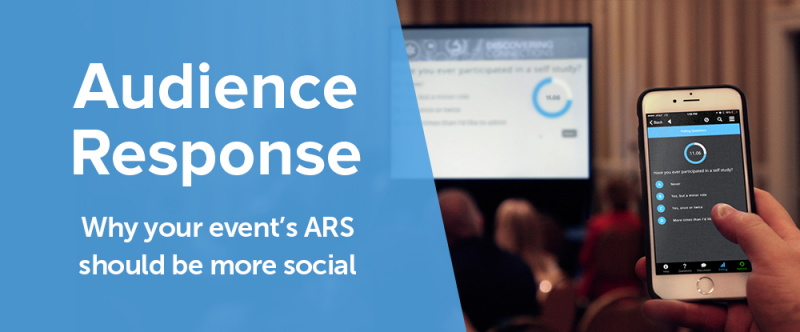
What Is a Social Audience Response System?
Audience response has been around for thousands of years. Remember the movie Gladiator? Thumbs up or thumbs down was the ancient audience response system (or ARS). Clapping or booing is another form of it.
Technology has done a great job taming ARS in recent years. Colleges and conferences often use clickers that attendees can interact with to give their opinion or answer to yes-no or multiple choice questions.
The problem is that conferences are by nature social environments. Audience response, then, would be social too. With all the fun social media tools now available, you'd think there would be a way to get your attendees interacting beyond multiple choice. Wouldn't it be exciting if they could ask the speaker questions, upvote others' questions, or comment on the content presented?
This is exactly what social audience response does.
So how does it work?
Well, it's simple. Just like social media, it requires your attendees to bring a device (you no longer have to over-order equipment) and a positive attitude. You simply need an app and some AV equipment (and a little patience to work with speakers on their questions if you're hands-on).
Once you're all set up, you give your attendees free-reign. They can log in to your app, attend your social audience sessions, and interact with each other and the speaker through live polling, commenting, and questions.
Traditional Audience Response vs. Social Audience Response
The best part is that each attendee creates a profile up front. This means -- if they opt in to share data -- they have a unique ID attached to their so they can interact with other attendees on a more personal basis. This also gives speakers unique data about their attendees and the results of their polls.
Beyond the session, the conversation can continue in the app. Attendees will be able to use it as a continuing education resource and speakers will have the opportunity to connect further with their audience.
This is truly the future of audience response.
Benefits of a Social Audience Response System
1. Social Audience Response Facilitates Engagement
Social audience response goes beyond interaction and gets attendees engaged. It gets them thinking and talking about the subject matter. It connects content and speakers to the audience. Best of all, it gives them a platform to share their own expertise in a collaborative environment.
2. Social Audience Response Gives Introverts a Voice
Even introverts attend conferences. The problem is that they often don't shine in live collaborative groups and workshops. Introverts often prefer to think deeply about a problem before sharing their thoughts. Giving them a social-media-like environment to do this empowers them to share their valuable insights.
3. Social Audience Response Is a Personalized Experience
Personalization is so important. If a speaker lectures to a group of people that are already experts in the subject matter, she may lose her audience very quickly. However, if she polls the audience, learns what their pain points are, and engages them in a conversation around those topics, she will succeed in creating a meaningful experience for those individuals. It's about respecting people's time and needs.


